The HEDDphone was tested and reviewed at the premises of newly-launched South African online Head-Fi company, Lumous Audio. I was not incentivised to write this review, and the opinions expressed are entirely my own.
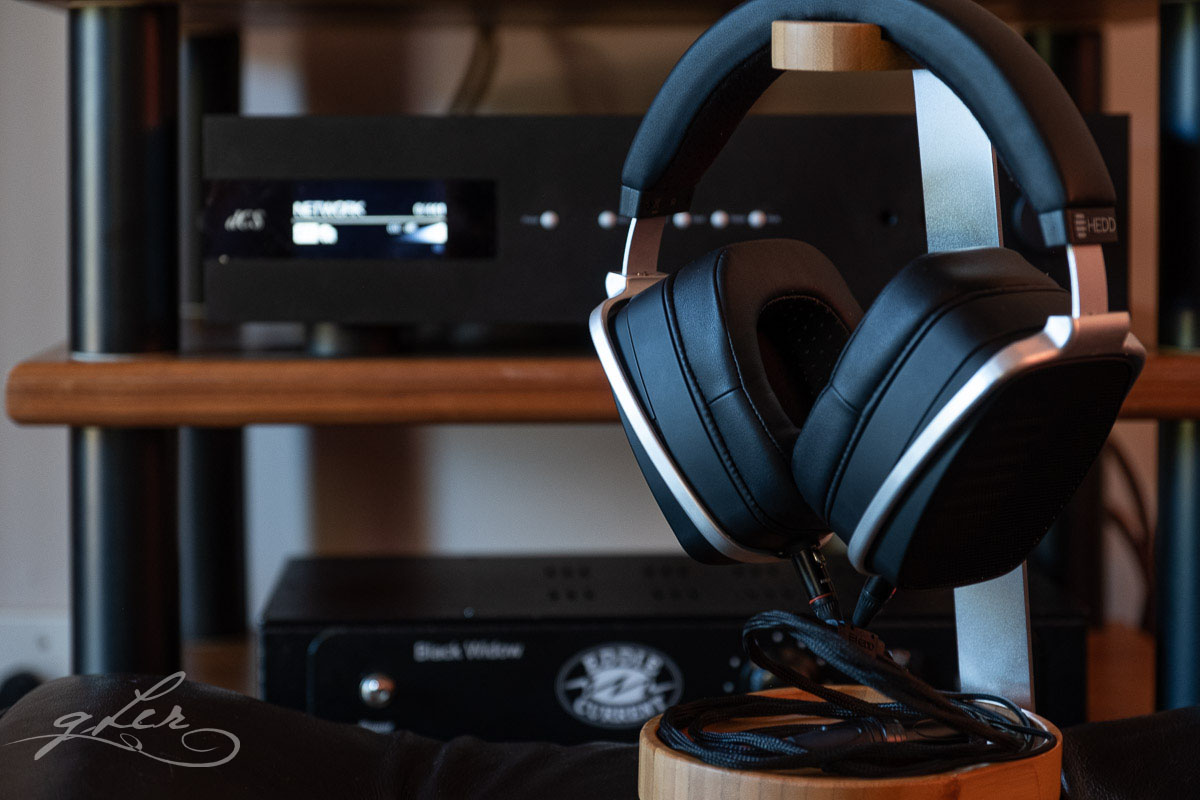
Introduction
I?ve been wandering around the cavernous headphone rabbit hole for more than four years now, experiencing many of the fascinating creations it has to offer, to the point where there?s little that genuinely surprises me now when I listen to it.
That changed recently when I finally got to hear for myself one of the most talked about headphones in recent history, the HEDDphone. Simply named after its founding company, Berlin-based Heinz Electrodynamic Design (HEDD), the HEDDphone is the world?s first headphone to feature a full-range AMT (Air Motion Transformer) driver, an audio transducer technology invented by Oskar Heil and perfected by German physicist Klaus Heinz (yes, the self-same Heinz in HEDD).
Without getting into details that are probably better covered elsewhere, AMT technology is not new, and in fact has been used in speakers and some headphones for years. Until the HEDDphone, however, AMT was primarily used for tweeter designs, popularised by the famous ribbon tweeters in Adam Audio studio monitors.
As a tweeter technology, AMT?s claim to fame is speed and precision. Made from an ultra-thin mylar ribbon and suspended between two dipole magnets, the drivers have a surface area up to 80% larger yet significantly lighter than traditional dynamic driver speaker designs, and so can move air much quicker when activated by an electrical signal.
HEDD uses what it calls VVT (Variable Velocity Transform) technology to vary the depth and geometry of the driver, thus expanding the narrower frequency range of AMT tweeters to produce full range (10Hz ? 40kHz) sound.
For every clever technology, however, there?s always a downside. In the case of HEDD?s full-range drivers, the downside is size ? and weight. Each driver is hand-assembled and placed into a protective box made of (what appears to be) stainless steel, not only to protect the sensitive diaphragm, but also allow for the correct sizing needed to produce the desired sound quality in headphone format.
The driver canisters are then suspended inside the solidly-built leather-padded metal shell of the HEDDphone, resulting in what has to be one of the largest and heaviest headphones on the market today. It?s worth watching this video to get a good idea of what the process entails (trust me, it?s fascinating).
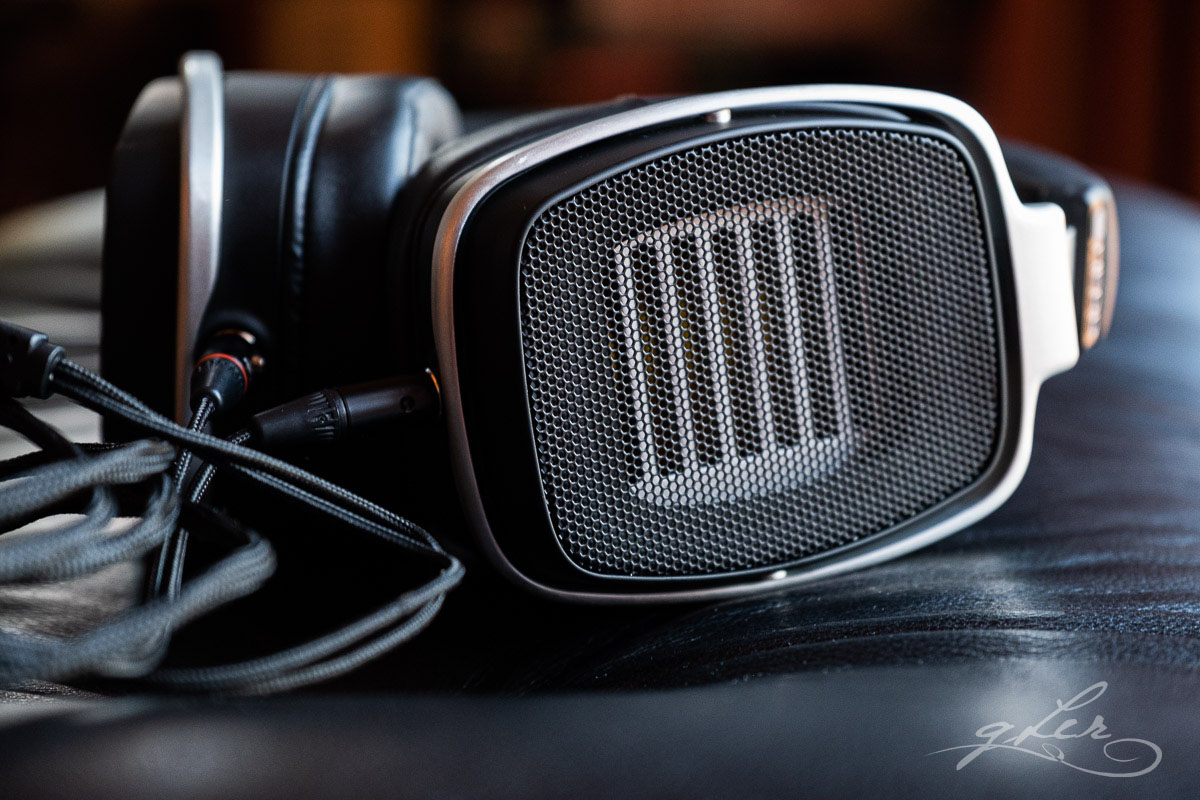
This is not a headphone for sissies; a few gym sessions and some serious neck muscle toning is strongly advised prior to tackling this beast. Jokes aside, the HEDDphone has actually been very cleverly designed to balance most of the weight strategically around head and shoulders. The thickly-padded headband is kinked right in the middle, preventing the painful hotspots typically associated with heavier headphones like Audeze?s LCD series (although that problem has since been alleviated with Audeze?s new suspension strap design).
A suspension strap would actually be a useful add-on to the HEDDphone, and I?ve already seen photos of users retrofitting their own straps to help lighten the load. Most of the weight, however, is literally cushioned by the giant pads that not only serve to soften the clamp of the headphone against your face, but also distance your ears from the gravitational pull of the giant magnets inside each of the cups (that last part about the magnet isn?t strictly true of course, but it was fun to write anyway).
Truth be told, I had a harder time wearing an unsuspended LCD-3, and even a Focal Elear, than I did with the HEDDphone. Make no mistake, this is not a portable headphone, and I wouldn?t even suggest walking around with it. But lying back in a comfortable recliner, you?ll soon forget you?re wearing helmet-sized headgear, and just get on with the business of loving your music.
I?ll link to other reviews at the end of this article that dive deeper into the packaging and unboxing experience, in case any of that interests you. If, like me, you?re more interested in what the HEDDphone can do, and how it compares to other headphones in and around its not-unsubstantial price point, read on.
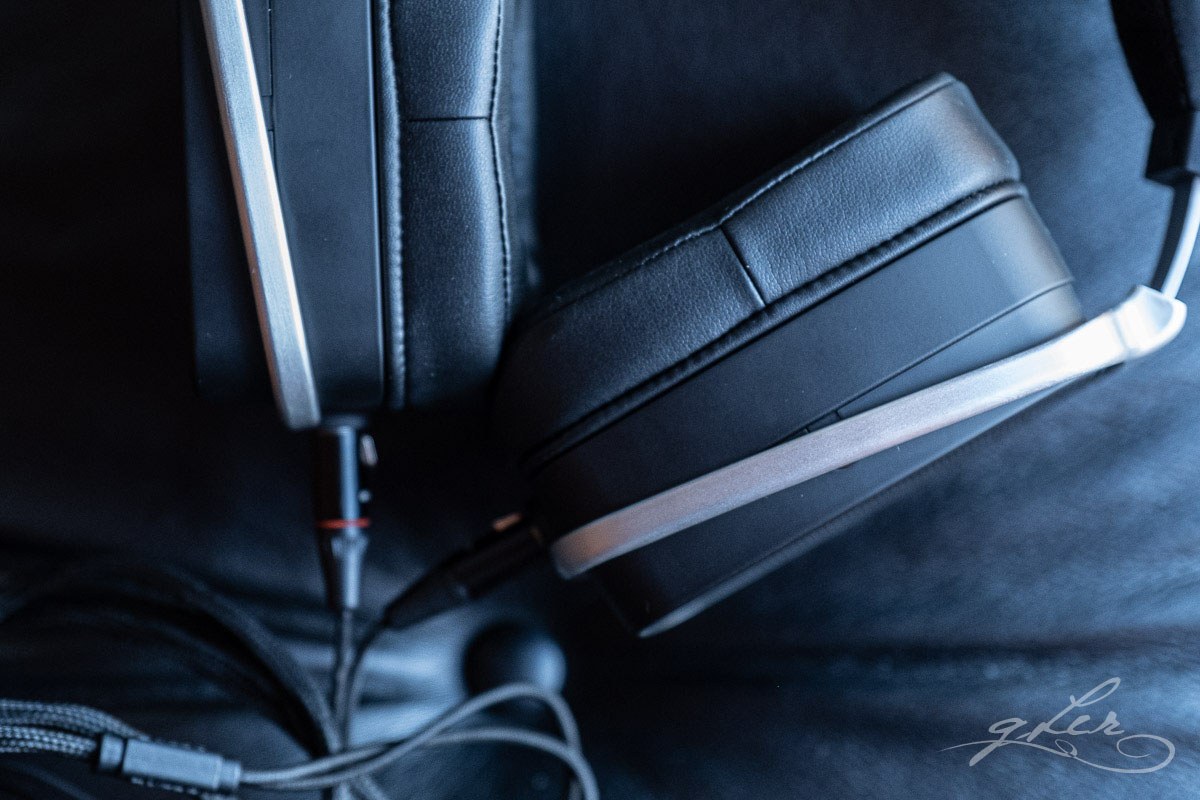
Sound impressions
Let me not keep you in suspense through the next thousand words of flowery sound descriptions: simply put, the HEDDphone is the single best headphone experience I?ve had in all my time using, testing and reviewing headphones. It conveys music in such a powerful, immediate yet delicate and refined way, that it?s as close to a full-size high-end speaker setup I?ve heard without using actual speakers.
I tested the HEDDphone using a wide variety of tracks from my playlist, from my staple female singer-songwrites, to modern and classic pop, jazz, classical, EDM, and some light rock. If you want impressions of what it sounds like with heavier stuff than, say, Def Leppard, I?m the wrong guy to ask, but I can only assume that its mastery over just about everything else I threw at it bodes well for a clean sweep of genres.
Tonally the HEDDphone is all about clarity. The first thing I noticed is how crystal clear every nuance of sound seemed to be, emanating from an ink black background and an almost infinitely deep stage. This is probably unsurprising given that AMT drivers are best known for their ultracrisp treble quality, but even so, the clarity, air and sheer detail delivery was surprising.
As a big fan of the HD800 I?ve heard my fair share of bright-leaning treble, but here was something different. It had brightness, yes, but it was brightness without hardness, so the details, while there, were never forced on me.
Listening to Gheorghe Zamfir?s The Lonely Shepherd, I could almost hear the air moving up from his lungs into the panpipes. The subtle guitars in left channel were so clear, so perfectly separated from the pipes, I could almost see them being plucked. Delicate sounds were being played on different layers and levels, an impossible feat without impeccable lower and upper treble control and definition.
The HEDDphone?s treble response was also my first clue that, great as it can be, it very much depends on proper amplification. Whereas the piano in the intro to Daft Punk?s Within was very tight, it was also brighter and thinner in tone before I switched over from a built-in headphone amplifier to a dedicated high-powered amp. Only then did this track go from clinical and edgy to a more refined presentation.
The same can be said of HEDDphone?s bass response. Whereas I initially felt the bass was slightly lacking on some of my tracks ? the kick drums in Brandi Carlile?s masterful The Story didn?t have quite the kick I know them to have ? I later discovered that amplification quality is crucial if you expect the HEDDphone to perform at its peak.
Once properly amped, the bass hits hard and true, and although I wouldn?t rec the HEDDphone to bassheads, there was more than enough quantity for this reformed basshead, and the quality was nothing short of sublime. I was even greeted with impressive sub bass rumble in the intro to Dirk Elhert?s Elements, and the kick drums to Def Leppard?s Love Bites had a punch I could feel in my cheeks, not something I?ve heard too often with open-back headphones.
Compared to Meze?s Empyrean, a hybrid planar flagship headphone that retails for a solid $1000 more than the HEDDphone, the bass is more linear, digging deeper into the sub bass without any bloating in the midbass. It?s perhaps not quite as aggressive and sustained as the brilliant bass response of Audeze?s LCD-3, but is tighter and more detailed, and notably faster to my ears.
Both Empyrean and LCD-3 tend to favour a warmer tonality, the Empyrean even more so with its bloomy midbass that veils over the fundamentals of the midrange, and while the HEDDphone isn?t strictly neutral, it?s definitely closer to a reference bass tuning than its more coloured compatriots.
Speaking of midrange, this was perhaps the star of the show for me as far as tonality is concerned. Almost every other headphone I listened to alongside the HEDDphone emphasised one or other frequency over the others, to the point of distraction. The Empyrean?s midbass and slightly rolled treble, the LCD-3?s dominant sub-bass and smoothed over upper registers, and the HD800?s aggressive treble and rolled off bass come to mind.
With the HEDDphone I didn?t feel it compromised in any one area, and whereas the midrange of the three other headphones was almost an afterthought, on the HEDDphone it was front and centre, neither recessed or too forward, and perfectly balanced with the extremities.
Vocals and instrument fundamentals were particularly natural and lifelike, not quite organic ? as that would suggest a warmer tilt ? but far from thin or analytical. Imogen Heap?s vocals in the spritely track Between Sheets are sweet, clean, sibilance free and ultra-realistic. I could hear every inflection in her voice, while the sense of stage and separation from the instruments allowed me to almost walk around the song (yet also sit back and take it all in).
Holly Throsby?s sweet vocals in What Do You Say played off perfectly with Mark Kozelek?s warm, reassuring baritone on the same track, resulting in an incredibly palpable presentation that felt as if there was nothing between the singers and my ears. Switching pace, the vocal trance of Fragma?s You Are Alive was smooth and absolutely sibilant free, nicely separated from the effects dancing around the vocals, with echoes and reverbs creating a massive sense of space.
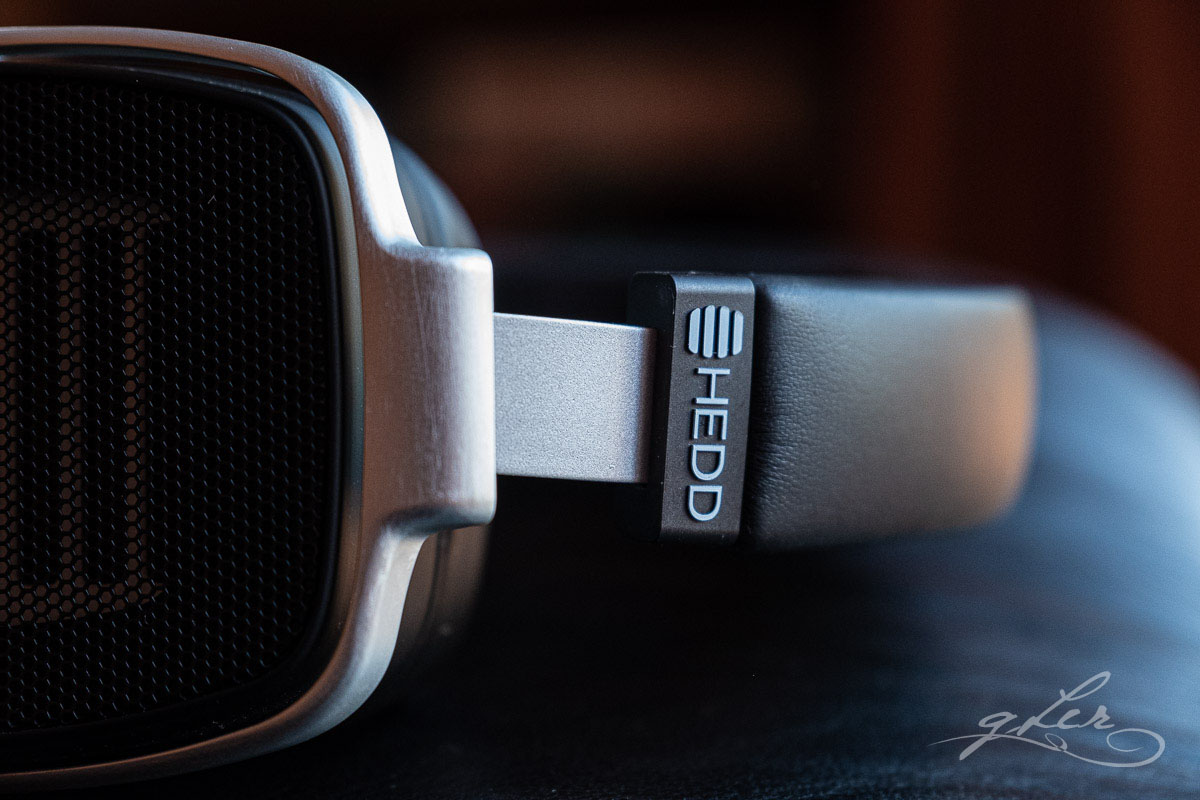
Technically the HEDDphone is easily at flagship level, and I?ll go as far as say this is a new standard for headphones in this price range. Neither the LCD-3, at around the same price point, or the Empyrean costing significantly more, can compete with the HEDDphone for sheer technical acuity. The only headphone I?ve heard that goes toe-to-toe technically is the HD800, although I much prefer the HEDDphone?s tonality to the HD800 (sans SDR and EQ).
Stage in a headphone is a controversial topic, especially compared to live sound and speakers, but the HEDDphone presents one of the biggest stages I?ve heard in a headphone to date. It?s not quite as wide as the HD800, but significantly deeper and taller, and gives a better sense of size to the music.
Made in Heights? Hors D?Oeuvre is a track I often use to test space, and indeed I heard sounds appearing out of a jet-black background that gave this track a natural sense of space, with endless decays. Lily Kershaw?s Always and Forever was more spacious yet also more cohesive than I?d heard it before, with minutae details floating around the 3D space created by the HEDDphone.
This track also exemplifies the inch-perfect imaging this headphone is capable of, so when Lily?s vocals split into three at the two-minute mark, I could almost see where each ?voice? was standing in the space relative to the centre image.
But of all the technical highlights, detail retrieval has to be the most impressive trait of this headphone. Every single subtle sound can be heard exactly where it?s been placed in the mix, and throughout my audition I never stopped delighting at how the details seemed to appear so vividly, as if from nowhere and everywhere at the same time.
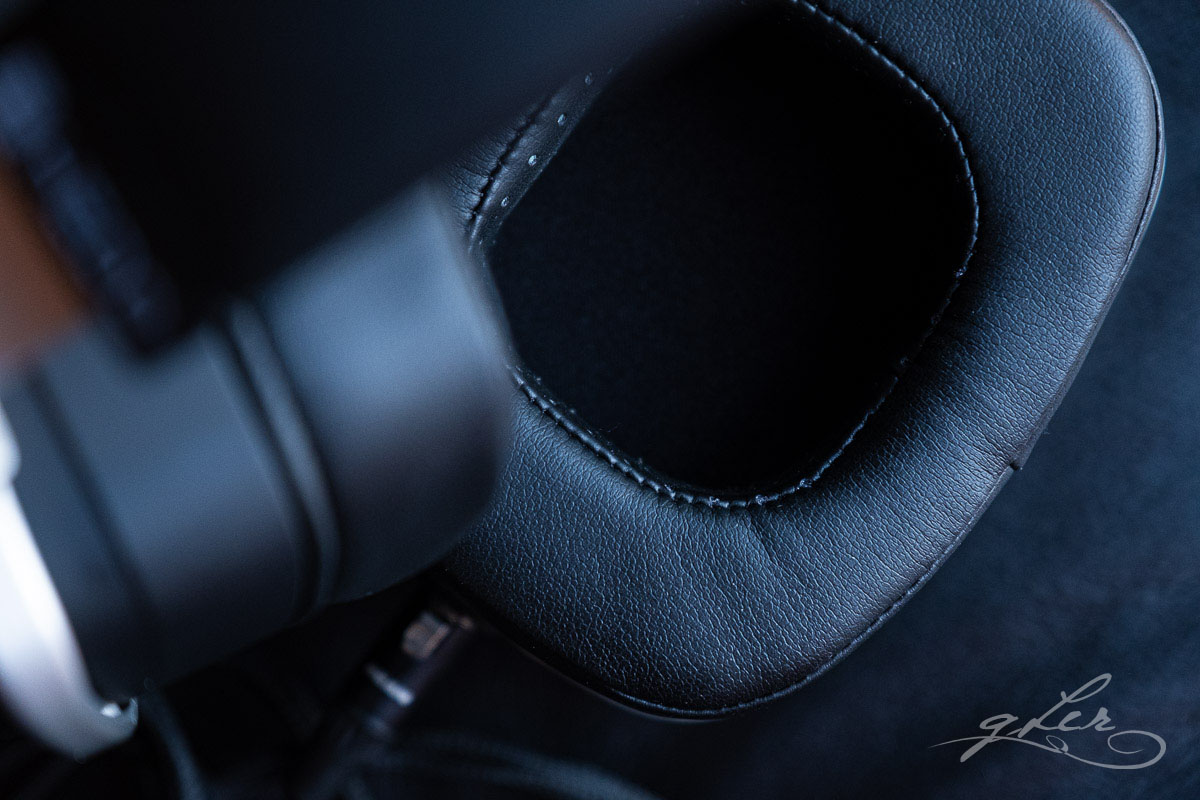
Considerations
Be warned, all this quality doesn?t come cheap, and doesn?t come easy. I already mentioned how heavy the monstrous frame of the HEDDphone can feel on your head, and this bears repeating. You?ll want a quiet, comfortable, well supported place to rest your body and head before embarking on a proper listening session.
You?ll also need power ? and plenty of it ? to drive the HEDDphone to its full potential. Voltage isn?t really an issue, and it?s not difficult to get the HEDDphone to loud enough volume levels. But without enough juice, enough current, you?re going to hear a steep dropoff in dynamic range, and wonder where all the sub bass has suddenly disappeared.
This is not a headphone you?re going to be happy connecting to a basic portable source ? definitely not a phone, and not a midrange DAP either. You?ll want something with muscle, like a HiBy R8 or iBasso DX300, or better yet a powerful portable amp like Cayin?s C9, if you?re even thinking of taking this headphone off the desktop.
As for desktop power, only when I had the HEDDphone connected to an Eddie Current Black Widow did I get a proper understanding of what this headphone can do, technically and tonally (and if anyone knows the story of this rare and unique solid state amp you?ll know how special it sounds). That?s not to say you have to splash the same money on amping the HEDDphone as the headphone itself, but doing so will give you a far better return on your investment.
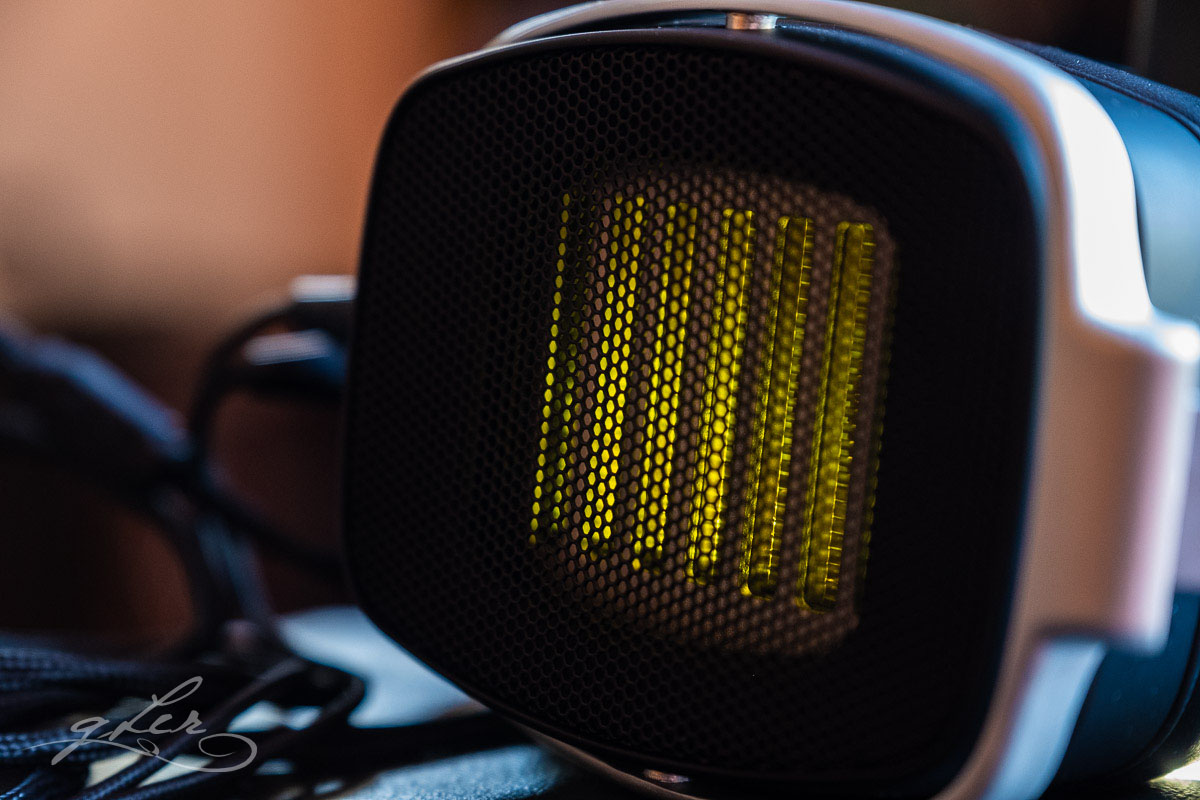
Closing thoughts
Listening to HEDDphone was a wild ride for me, especially since I?ve switched my listening almost entirely away from full size desktop headphones to IEMs. It was a reacquaintance of sorts with the type of sound that set me on my head-fi journey more than four years ago, and in many ways, is a reaffirmation of just how incredibly rewarding the sound of a truly great headphone can be.
For all its wizardry and world-first technology, the HEDDphone at its core is all about recreating music exactly as it was recorded, with very little in the way of ?gear? in the way. It?s not a headphone that sets out to colour the music, or to wow you with unconventional staging, gratuitous bass or scalpel-like detail. It hits the highest possible level of fidelity almost from the off, and then maintains it throughout your listen, track after track.
Even though I consider the HEDDphone to be close to a so-called ?reference? tuning, it still maintains a sense of musicality that?s fun to listen to and is about as far from dry or clinical as you can get in this hobby. Yes, it asks for some skin (or rather, muscle) in return, and demands as much power as your wallet can muster, but it will reward you handsomely if you give it what it wants.
In closing, I?ll leave you with this: the HEDDphone is a headphone for the headphone connoisseur. It sacrifices some of the comfort of an Empyrean, the brute strength of an LCD-3, and the clinical precision of an HD800 to create a sound as close as possible to life itself. It gives you everything without forcing anything, and in doing so, allows you to lose yourself in the music in the best possible way.
Without question the HEDDphone gets my highest recommendation, and represents the best value of any high-end headphone I have personally has the pleasure of hearing.
The HEDDphone is available in South Africa from Lumous Audio. More information available here.
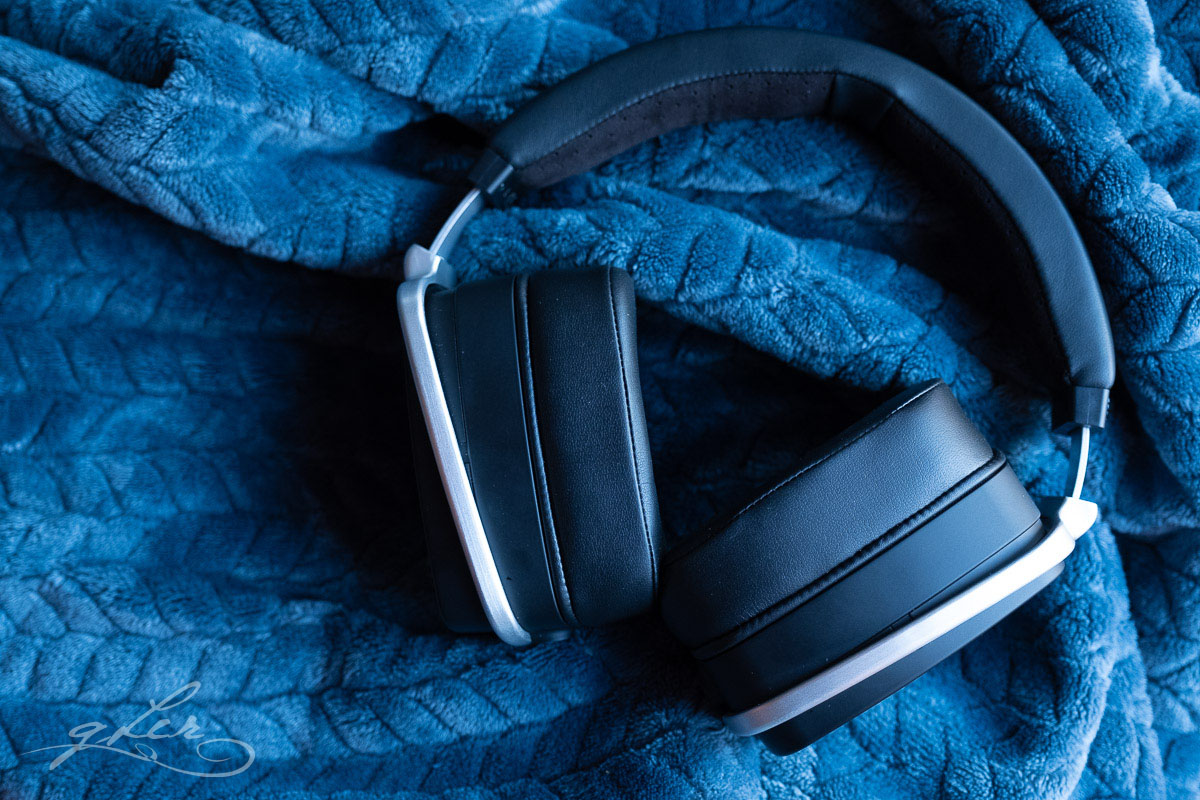
Further reading
This review didn?t cover several aspects that some of you may be interested in, like packaging, accessories and comparisons to different headphones. Feel free to peruse some of the other excellent reviews of this headphone available online, including:
? Headfonics
? Headfonia
? Headphones.com
? Headphone Check

Introduction
I?ve been wandering around the cavernous headphone rabbit hole for more than four years now, experiencing many of the fascinating creations it has to offer, to the point where there?s little that genuinely surprises me now when I listen to it.
That changed recently when I finally got to hear for myself one of the most talked about headphones in recent history, the HEDDphone. Simply named after its founding company, Berlin-based Heinz Electrodynamic Design (HEDD), the HEDDphone is the world?s first headphone to feature a full-range AMT (Air Motion Transformer) driver, an audio transducer technology invented by Oskar Heil and perfected by German physicist Klaus Heinz (yes, the self-same Heinz in HEDD).
Without getting into details that are probably better covered elsewhere, AMT technology is not new, and in fact has been used in speakers and some headphones for years. Until the HEDDphone, however, AMT was primarily used for tweeter designs, popularised by the famous ribbon tweeters in Adam Audio studio monitors.
As a tweeter technology, AMT?s claim to fame is speed and precision. Made from an ultra-thin mylar ribbon and suspended between two dipole magnets, the drivers have a surface area up to 80% larger yet significantly lighter than traditional dynamic driver speaker designs, and so can move air much quicker when activated by an electrical signal.
HEDD uses what it calls VVT (Variable Velocity Transform) technology to vary the depth and geometry of the driver, thus expanding the narrower frequency range of AMT tweeters to produce full range (10Hz ? 40kHz) sound.
For every clever technology, however, there?s always a downside. In the case of HEDD?s full-range drivers, the downside is size ? and weight. Each driver is hand-assembled and placed into a protective box made of (what appears to be) stainless steel, not only to protect the sensitive diaphragm, but also allow for the correct sizing needed to produce the desired sound quality in headphone format.
The driver canisters are then suspended inside the solidly-built leather-padded metal shell of the HEDDphone, resulting in what has to be one of the largest and heaviest headphones on the market today. It?s worth watching this video to get a good idea of what the process entails (trust me, it?s fascinating).

This is not a headphone for sissies; a few gym sessions and some serious neck muscle toning is strongly advised prior to tackling this beast. Jokes aside, the HEDDphone has actually been very cleverly designed to balance most of the weight strategically around head and shoulders. The thickly-padded headband is kinked right in the middle, preventing the painful hotspots typically associated with heavier headphones like Audeze?s LCD series (although that problem has since been alleviated with Audeze?s new suspension strap design).
A suspension strap would actually be a useful add-on to the HEDDphone, and I?ve already seen photos of users retrofitting their own straps to help lighten the load. Most of the weight, however, is literally cushioned by the giant pads that not only serve to soften the clamp of the headphone against your face, but also distance your ears from the gravitational pull of the giant magnets inside each of the cups (that last part about the magnet isn?t strictly true of course, but it was fun to write anyway).
Truth be told, I had a harder time wearing an unsuspended LCD-3, and even a Focal Elear, than I did with the HEDDphone. Make no mistake, this is not a portable headphone, and I wouldn?t even suggest walking around with it. But lying back in a comfortable recliner, you?ll soon forget you?re wearing helmet-sized headgear, and just get on with the business of loving your music.
I?ll link to other reviews at the end of this article that dive deeper into the packaging and unboxing experience, in case any of that interests you. If, like me, you?re more interested in what the HEDDphone can do, and how it compares to other headphones in and around its not-unsubstantial price point, read on.

Sound impressions
Let me not keep you in suspense through the next thousand words of flowery sound descriptions: simply put, the HEDDphone is the single best headphone experience I?ve had in all my time using, testing and reviewing headphones. It conveys music in such a powerful, immediate yet delicate and refined way, that it?s as close to a full-size high-end speaker setup I?ve heard without using actual speakers.
I tested the HEDDphone using a wide variety of tracks from my playlist, from my staple female singer-songwrites, to modern and classic pop, jazz, classical, EDM, and some light rock. If you want impressions of what it sounds like with heavier stuff than, say, Def Leppard, I?m the wrong guy to ask, but I can only assume that its mastery over just about everything else I threw at it bodes well for a clean sweep of genres.
Tonally the HEDDphone is all about clarity. The first thing I noticed is how crystal clear every nuance of sound seemed to be, emanating from an ink black background and an almost infinitely deep stage. This is probably unsurprising given that AMT drivers are best known for their ultracrisp treble quality, but even so, the clarity, air and sheer detail delivery was surprising.
As a big fan of the HD800 I?ve heard my fair share of bright-leaning treble, but here was something different. It had brightness, yes, but it was brightness without hardness, so the details, while there, were never forced on me.
Listening to Gheorghe Zamfir?s The Lonely Shepherd, I could almost hear the air moving up from his lungs into the panpipes. The subtle guitars in left channel were so clear, so perfectly separated from the pipes, I could almost see them being plucked. Delicate sounds were being played on different layers and levels, an impossible feat without impeccable lower and upper treble control and definition.
The HEDDphone?s treble response was also my first clue that, great as it can be, it very much depends on proper amplification. Whereas the piano in the intro to Daft Punk?s Within was very tight, it was also brighter and thinner in tone before I switched over from a built-in headphone amplifier to a dedicated high-powered amp. Only then did this track go from clinical and edgy to a more refined presentation.
The same can be said of HEDDphone?s bass response. Whereas I initially felt the bass was slightly lacking on some of my tracks ? the kick drums in Brandi Carlile?s masterful The Story didn?t have quite the kick I know them to have ? I later discovered that amplification quality is crucial if you expect the HEDDphone to perform at its peak.
Once properly amped, the bass hits hard and true, and although I wouldn?t rec the HEDDphone to bassheads, there was more than enough quantity for this reformed basshead, and the quality was nothing short of sublime. I was even greeted with impressive sub bass rumble in the intro to Dirk Elhert?s Elements, and the kick drums to Def Leppard?s Love Bites had a punch I could feel in my cheeks, not something I?ve heard too often with open-back headphones.
Compared to Meze?s Empyrean, a hybrid planar flagship headphone that retails for a solid $1000 more than the HEDDphone, the bass is more linear, digging deeper into the sub bass without any bloating in the midbass. It?s perhaps not quite as aggressive and sustained as the brilliant bass response of Audeze?s LCD-3, but is tighter and more detailed, and notably faster to my ears.
Both Empyrean and LCD-3 tend to favour a warmer tonality, the Empyrean even more so with its bloomy midbass that veils over the fundamentals of the midrange, and while the HEDDphone isn?t strictly neutral, it?s definitely closer to a reference bass tuning than its more coloured compatriots.
Speaking of midrange, this was perhaps the star of the show for me as far as tonality is concerned. Almost every other headphone I listened to alongside the HEDDphone emphasised one or other frequency over the others, to the point of distraction. The Empyrean?s midbass and slightly rolled treble, the LCD-3?s dominant sub-bass and smoothed over upper registers, and the HD800?s aggressive treble and rolled off bass come to mind.
With the HEDDphone I didn?t feel it compromised in any one area, and whereas the midrange of the three other headphones was almost an afterthought, on the HEDDphone it was front and centre, neither recessed or too forward, and perfectly balanced with the extremities.
Vocals and instrument fundamentals were particularly natural and lifelike, not quite organic ? as that would suggest a warmer tilt ? but far from thin or analytical. Imogen Heap?s vocals in the spritely track Between Sheets are sweet, clean, sibilance free and ultra-realistic. I could hear every inflection in her voice, while the sense of stage and separation from the instruments allowed me to almost walk around the song (yet also sit back and take it all in).
Holly Throsby?s sweet vocals in What Do You Say played off perfectly with Mark Kozelek?s warm, reassuring baritone on the same track, resulting in an incredibly palpable presentation that felt as if there was nothing between the singers and my ears. Switching pace, the vocal trance of Fragma?s You Are Alive was smooth and absolutely sibilant free, nicely separated from the effects dancing around the vocals, with echoes and reverbs creating a massive sense of space.

Technically the HEDDphone is easily at flagship level, and I?ll go as far as say this is a new standard for headphones in this price range. Neither the LCD-3, at around the same price point, or the Empyrean costing significantly more, can compete with the HEDDphone for sheer technical acuity. The only headphone I?ve heard that goes toe-to-toe technically is the HD800, although I much prefer the HEDDphone?s tonality to the HD800 (sans SDR and EQ).
Stage in a headphone is a controversial topic, especially compared to live sound and speakers, but the HEDDphone presents one of the biggest stages I?ve heard in a headphone to date. It?s not quite as wide as the HD800, but significantly deeper and taller, and gives a better sense of size to the music.
Made in Heights? Hors D?Oeuvre is a track I often use to test space, and indeed I heard sounds appearing out of a jet-black background that gave this track a natural sense of space, with endless decays. Lily Kershaw?s Always and Forever was more spacious yet also more cohesive than I?d heard it before, with minutae details floating around the 3D space created by the HEDDphone.
This track also exemplifies the inch-perfect imaging this headphone is capable of, so when Lily?s vocals split into three at the two-minute mark, I could almost see where each ?voice? was standing in the space relative to the centre image.
But of all the technical highlights, detail retrieval has to be the most impressive trait of this headphone. Every single subtle sound can be heard exactly where it?s been placed in the mix, and throughout my audition I never stopped delighting at how the details seemed to appear so vividly, as if from nowhere and everywhere at the same time.

Considerations
Be warned, all this quality doesn?t come cheap, and doesn?t come easy. I already mentioned how heavy the monstrous frame of the HEDDphone can feel on your head, and this bears repeating. You?ll want a quiet, comfortable, well supported place to rest your body and head before embarking on a proper listening session.
You?ll also need power ? and plenty of it ? to drive the HEDDphone to its full potential. Voltage isn?t really an issue, and it?s not difficult to get the HEDDphone to loud enough volume levels. But without enough juice, enough current, you?re going to hear a steep dropoff in dynamic range, and wonder where all the sub bass has suddenly disappeared.
This is not a headphone you?re going to be happy connecting to a basic portable source ? definitely not a phone, and not a midrange DAP either. You?ll want something with muscle, like a HiBy R8 or iBasso DX300, or better yet a powerful portable amp like Cayin?s C9, if you?re even thinking of taking this headphone off the desktop.
As for desktop power, only when I had the HEDDphone connected to an Eddie Current Black Widow did I get a proper understanding of what this headphone can do, technically and tonally (and if anyone knows the story of this rare and unique solid state amp you?ll know how special it sounds). That?s not to say you have to splash the same money on amping the HEDDphone as the headphone itself, but doing so will give you a far better return on your investment.

Closing thoughts
Listening to HEDDphone was a wild ride for me, especially since I?ve switched my listening almost entirely away from full size desktop headphones to IEMs. It was a reacquaintance of sorts with the type of sound that set me on my head-fi journey more than four years ago, and in many ways, is a reaffirmation of just how incredibly rewarding the sound of a truly great headphone can be.
For all its wizardry and world-first technology, the HEDDphone at its core is all about recreating music exactly as it was recorded, with very little in the way of ?gear? in the way. It?s not a headphone that sets out to colour the music, or to wow you with unconventional staging, gratuitous bass or scalpel-like detail. It hits the highest possible level of fidelity almost from the off, and then maintains it throughout your listen, track after track.
Even though I consider the HEDDphone to be close to a so-called ?reference? tuning, it still maintains a sense of musicality that?s fun to listen to and is about as far from dry or clinical as you can get in this hobby. Yes, it asks for some skin (or rather, muscle) in return, and demands as much power as your wallet can muster, but it will reward you handsomely if you give it what it wants.
In closing, I?ll leave you with this: the HEDDphone is a headphone for the headphone connoisseur. It sacrifices some of the comfort of an Empyrean, the brute strength of an LCD-3, and the clinical precision of an HD800 to create a sound as close as possible to life itself. It gives you everything without forcing anything, and in doing so, allows you to lose yourself in the music in the best possible way.
Without question the HEDDphone gets my highest recommendation, and represents the best value of any high-end headphone I have personally has the pleasure of hearing.
The HEDDphone is available in South Africa from Lumous Audio. More information available here.

Further reading
This review didn?t cover several aspects that some of you may be interested in, like packaging, accessories and comparisons to different headphones. Feel free to peruse some of the other excellent reviews of this headphone available online, including:
? Headfonics
? Headfonia
? Headphones.com
? Headphone Check
